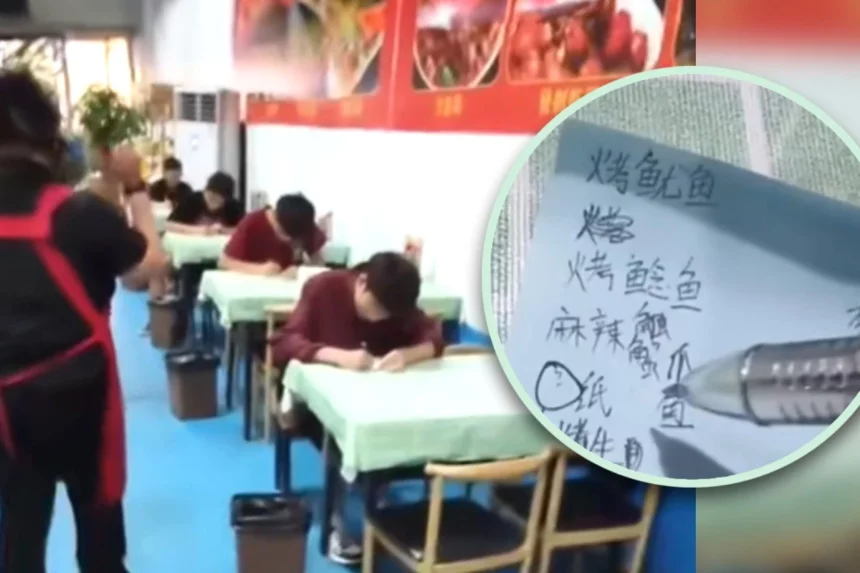In a move that has sparked amusement online, a restaurant owner in central China has devised a test for his casual employees after noticing their difficulty in writing Chinese characters correctly while taking orders.
The owner of a barbecue outlet in Xinxiang, Henan province, asked his summer season staff to sit at separate tables with pen and paper while he announced dish names, according to Xiaozheng Video. The staff, consisting of university students and recent secondary school graduates born after the year 2000, were tasked with writing down the names of seven popular dishes, such as grilled squid and grilled oysters.
The results varied significantly. The best performer only made one mistake, while the worst left six blanks or wrote incorrect characters. “I held this test since their handwritten orders were either hard to read, had the wrong characters, or were marked incorrectly,” the owner explained.
The video of this impromptu test went viral, garnering 4 million views on Douyin and attracting 30,000 comments, many of which were humorous. “This boss dreams of being a teacher, ha,” one commenter joked. Another remarked, “These students were probably thinking to themselves, ‘Why do I need to take a test in the summer holiday?’”
The incident highlights a broader issue among China’s younger generation, many of whom struggle with writing Chinese characters despite being able to read and type them. A survey by Life Times last year found that about 40 percent of 1,000 young people interviewed admitted they often do not know how to write Chinese characters properly.
According to China’s Ministry of Education, illiteracy rates in the country’s cities are below three percent, with nearly one quarter of the population receiving higher education. However, the ability to write Chinese characters by hand is diminishing among the younger population, who rely heavily on digital devices for communication.
The restaurant owner’s creative solution not only addressed his immediate problem but also shed light on a significant cultural shift in the digital age.

